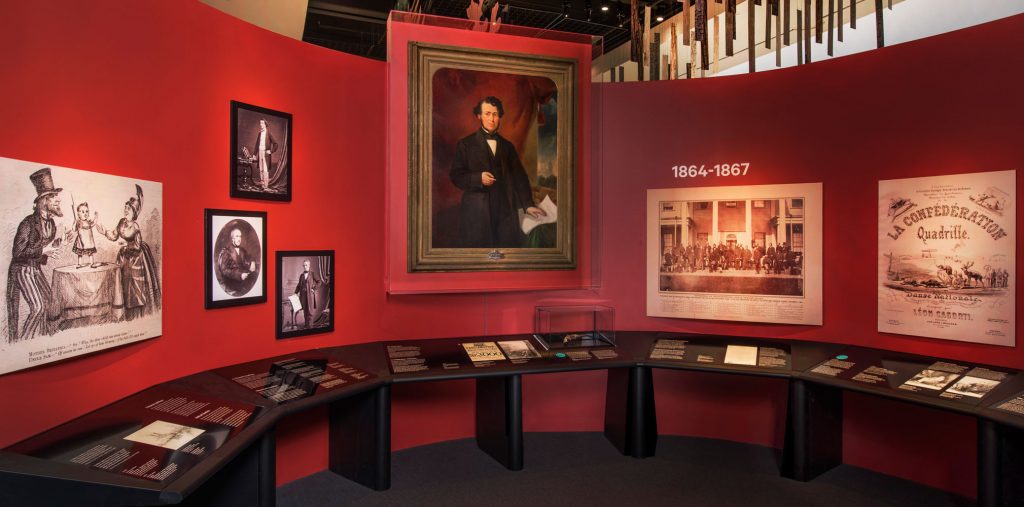The portrait D’Arcy McGee never lived to see
One hundred and fifty years ago, a group of Thomas D’Arcy McGee’s friends were planning a special gift: a portrait in honour of the politician’s 43rd birthday. However, on April 7, six days before his birthday, McGee was murdered.
Painted in oil in 1868 by Frederic Marlett Bell-Smith, the portrait bears an inscription reading, “Presented to the HonbleThos D’arcy McGee M.P. by friends in Montreal and Ottawa on his 43rd birthday April 13th 1868.” When McGee was killed only days before the portrait’s unveiling, his friends added another inscription: “Unhappily frustrated in the fulfillment of this intention by his Cruel Assassination at Ottawa on the 7th of April 1868. His friends now present it with their deepest sympathy to his bereaved Widow and Children.” The portrait has remained in the family ever since.

Portrait of Thomas D’Arcy McGee in the Canadian History Hall. Canadian Museum of History, IMG2017-0043-0019-Dm
Euphrasia Quinn, McGee’s eldest daughter, took the portrait with her when she left Montréal for California. Eventually, the painting was passed down to D’Arcy Quinn, McGee’s great-great grandson. Mr. Quinn had it hanging in his house in Switzerland until a chance meeting in Ireland with Canadian Museum of History CEO Mark O’Neill led to its current temporary home in the Museum.
To many, Thomas D’Arcy McGee seemed an unlikely Father of Confederation. During his youth in Ireland, McGee was involved in efforts to free his native country from British rule. Having once described himself as “a traitor to the British government,” he advocated revolution in favour of the Irish nationalist cause. However, after immigrating to the United Canadas, McGee developed a profound respect for British-style parliamentary government, seeing it as a way for minorities to enjoy liberty and tolerance. Always a compelling orator, he was elected to assembly in 1857 and became famous for his impassioned writings and speeches in favour of Confederation.
McGee’s political change of heart and his denunciation of the Irish national movement, Fenianism, took a toll on his popularity. Many Irish immigrants, the community he sought to defend, began to see him as a traitor.
On Tuesday, April 7, 1868, he was shot and killed on Sparks Street outside his Ottawa home. Suspecting a Fenian conspiracy, the authorities quickly arrested Patrick James Whelan, who was found with a recently fired revolver in his possession. The revolver was later used to convict Whelan, but doubts about his guilt have long persisted. He maintained his innocence right up to the gallows, claiming to “know the man who shot Mr. McGee,” but never providing a name.
McGee’s funeral attracted tens of thousands of people to the streets of Montréal, where he was buried on what would have been his 43rd birthday.
Of course, McGee never got to see the portrait that his friends had commissioned for that birthday, but for 150 years his family has kept it as a reminder of their passionate, eloquent forefather who had such a lasting impact on the country. Now, visitors can find the portrait in the Museum’s new signature gallery, the Canadian History Hall.